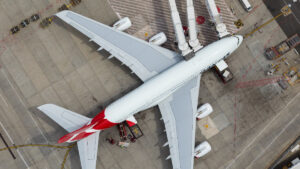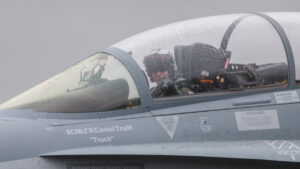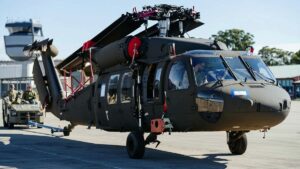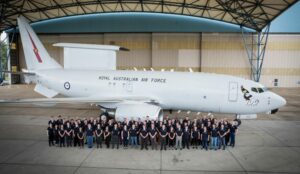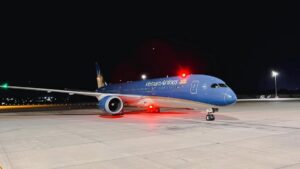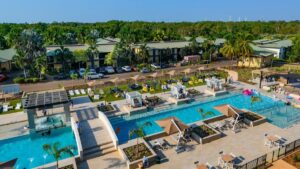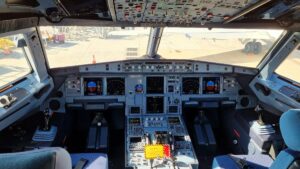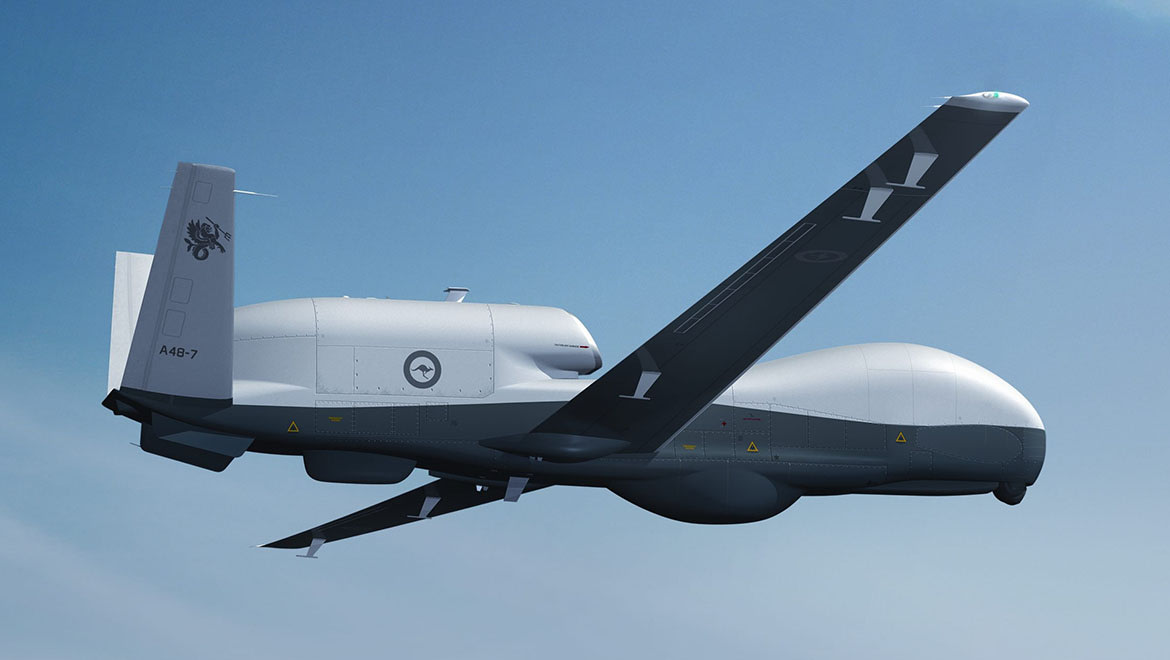
The US Navy has granted the MQ-4C Triton surveillance drone initial operating capability, a major milestone in its development.
The move is hugely significant for Australia, with the first delivery of the uncrewed aircraft set for next year and an inaugural flight imminent.
Triton is known as a high-altitude, long-endurance platform, or HALE, because of its ability to fly at 50,000 feet and for up to 24 hours at a time. Commercial aircraft typically fly at 30,000 feet and would need to refuel multiple times a day.
“Persistent global maritime awareness is central to deterring or competing and winning against our adversaries,” said US Navy Captain and maritime UAS program manager, Josh Guerre. “Triton ensures we’re making informed decisions and effectively operating anywhere in the world.”
Initial operating capability, or IOC, is the point when an aircraft is declared to have met its minimum capabilities and usually comes before being granted full operating capability, or FOC.
Australia will receive up to seven of the Northrop Grumman surveillance aircraft, which will be flown by the RAAF’s recently reformed No. 9 Squadron.
No. 9 Squadron was originally formed in 1939 as a fleet cooperation unit working with seaplanes and served during World War II in the Mediterranean Sea, Indian and Pacific Oceans, receiving 12 battle honours before being disbanded in 1944.
It was reformed in 1962 with personnel deployed as a helicopter squadron in active service during the Vietnam War before being disbanded again in 1989.
PROMOTED CONTENT
Its third incarnation will see the squadron fly the Triton from RAAF Base Edinburgh and be known as No. 92 Wing Surveillance and Response Group.
Chief of Air Force Air Marshal Rob Chipman previously said the re-establishment of No. 9 Squadron on 11 June this year marked the beginning of a new era in the squadron’s distinguished history.
“9 Squadron has played an incredibly important role in the Royal Australian Air Force, serving during critical times for Australia’s security,” AIRMSHL Chipman said.
“I’m proud to see the squadron return to service in 2023.”
The first of Australia’s future fleet of Tritons was unveiled in September last year. Australia can order up to seven, but a final decision on numbers has yet to be announced after the platform surprisingly wasn’t mentioned in Labor’s recent Defence Strategic Review.
- SEO Powered Content & PR Distribution. Get Amplified Today.
- PlatoData.Network Vertical Generative Ai. Empower Yourself. Access Here.
- PlatoAiStream. Web3 Intelligence. Knowledge Amplified. Access Here.
- PlatoESG. Carbon, CleanTech, Energy, Environment, Solar, Waste Management. Access Here.
- PlatoHealth. Biotech and Clinical Trials Intelligence. Access Here.
- BlockOffsets. Modernizing Environmental Offset Ownership. Access Here.
- Source: https://australianaviation.com.au/2023/09/us-navy-grants-triton-ioc-ahead-of-australia-delivery/
- :has
- :is
- $UP
- 000
- 1
- 11
- 12
- 2023
- 24
- 30
- 50
- 9
- a
- ability
- active
- After
- again
- against
- ahead
- AIR
- Air Force
- aircraft
- an
- and
- announced
- anywhere
- AS
- At
- Australia
- Australian
- awareness
- base
- Battle
- BE
- because
- before
- Beginning
- being
- BEST
- but
- by
- CAN
- capabilities
- capability
- central
- COM
- comes
- commercial
- competing
- cooperation
- critical
- day
- decision
- decisions
- defence
- delivery
- deployed
- Development
- Distinguished
- drone
- during
- Edinburgh
- effectively
- ensures
- Era
- Feet
- File
- final
- First
- FLEET
- flight
- For
- Force
- formed
- from
- full
- future
- Global
- granted
- grants
- Group
- Hale
- Have
- helicopter
- history
- HOURS
- HTTPS
- Hugely
- ii
- image
- important
- in
- Inaugural
- incredibly
- Indian
- informed
- initial
- ITS
- jpg
- june
- known
- Last
- Last Year
- major
- Making
- manager
- Maritime
- marked
- max-width
- Mediterranean
- mentioned
- met
- milestone
- minimum
- move
- multiple
- Need
- New
- next
- no
- numbers
- oceans
- of
- on
- operating
- or
- order
- originally
- our
- Pacific
- Personnel
- platform
- plato
- Plato Data Intelligence
- PlatoData
- played
- Point
- previously
- Program
- proud
- receiving
- recent
- response
- return
- review
- rob
- Role
- royal
- Said
- SEA
- security
- see
- service
- serving
- set
- seven
- significant
- Strategic
- strategic review
- surveillance
- The
- the world
- Third
- this
- this year
- time
- times
- to
- Triton
- typically
- unit
- us
- usually
- Vietnam
- war
- was
- when
- which
- will
- Wing
- winning
- with
- working
- world
- would
- year
- yet
- zephyrnet

